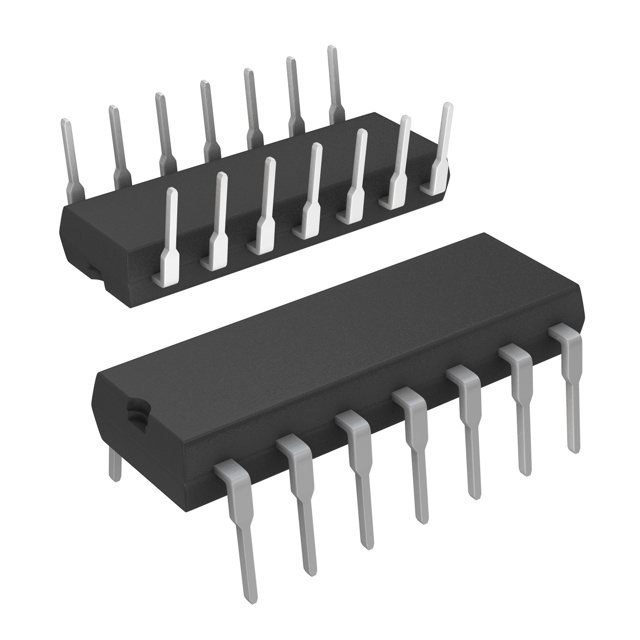JM54AC02BCA-RH
Manufacturer No:
JM54AC02BCA-RH
Manufacturer:
Description:
54AC02 - QUAD 2-INPUT NOR GATE -
Datasheet:
Delivery:





Payment:




In Stock : 257
Please send RFQ , we will respond immediately.









JM54AC02BCA-RH Specifications
-
TypeParameter
-
Package / Case14-CDIP (0.300", 7.62mm)
-
Supplier Device Package14-CERDIP
-
Mounting TypeThrough Hole
-
Operating Temperature-55°C ~ 125°C
-
Max Propagation Delay @ V, Max CL7.5ns @ 5V, 50pF
-
Input Logic Level - High2.1V ~ 3.85V
-
Input Logic Level - Low0.9V ~ 1.65V
-
Current - Output High, Low24mA, 24mA
-
Current - Quiescent (Max)40 µA
-
Voltage - Supply2V ~ 6V
-
Features-
-
Number of Inputs2
-
Number of Circuits4
-
Logic TypeNOR Gate
-
PackagingBulk
-
Product StatusActive
-
Series54AC
The JM54AC02BCA-RH is a specific model of integrated circuit chip, and its advantages and application scenarios can be summarized as follows:Advantages: 1. High-speed operation: The JM54AC02BCA-RH chip operates at high speeds, making it suitable for applications that require fast processing and response times. 2. Low power consumption: This chip is designed to consume low power, making it energy-efficient and suitable for battery-powered devices or applications where power efficiency is crucial. 3. Wide operating voltage range: The JM54AC02BCA-RH chip can operate within a wide voltage range, allowing it to be used in various electronic systems with different power supply specifications. 4. Compact size: Being an integrated circuit chip, it is small in size, which makes it suitable for applications where space is limited or miniaturization is required. 5. High reliability: The chip is designed to be highly reliable, ensuring stable and consistent performance over extended periods of use.Application Scenarios: 1. Digital logic circuits: The JM54AC02BCA-RH chip can be used in various digital logic circuits, such as gates, flip-flops, counters, and registers, to perform logical operations and data processing. 2. Microcontrollers and microprocessors: It can be used in microcontroller or microprocessor-based systems to perform specific functions or as a part of the overall system design. 3. Communication systems: The chip can be used in communication systems, such as routers, switches, and modems, to process and control data transmission. 4. Consumer electronics: It can be used in various consumer electronic devices, such as smartphones, tablets, and gaming consoles, to perform specific functions or as a part of the overall system design. 5. Industrial automation: The chip can be used in industrial automation systems, such as control panels, PLCs (Programmable Logic Controllers), and robotics, to perform specific tasks or control various processes.It is important to note that the specific application scenarios may vary depending on the requirements and specifications of the electronic system or device being designed.
JM54AC02BCA-RH Relevant information







